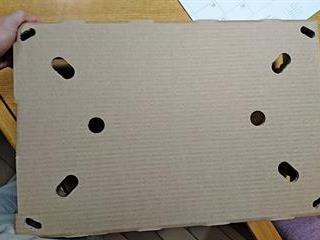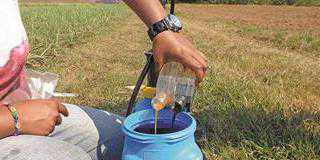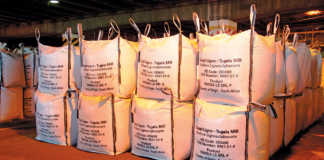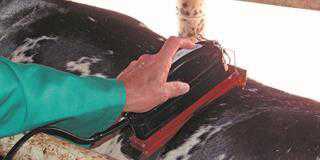
Rising production costs make it tempting for producers to buy sub-standard cartons. Packaging is generally seen as an area where savings can be made, according to Dawid Groenewald, a researcher from Citrus Research International’s Post Harvest Technical Forum.
“It’s relatively easy to calculate how much money you’ve spent on packaging. For example, if you pay R10/carton, and export a million cartons, your annual packaging cost will be R10 million. This makes packaging a far more attractive cost saving option than fuel, transport, handling or pre- cooling,” Groenewald said.
He warned that cutting corners with packaging could cost more in the long term thanbuying a good quality carton. Inferior packaging could have a negative impact on fruit quality and result in costly repackaging or even product rejection.
Leaner and lighter
The physical demand on cartons and pallets has increased as citrus export volumes have grown and high cube containers are used more often.
“Where A15C cartons used to be stacked seven layers high in conventional vessels or standard shipping containers, they are now stacked eight layers high, at a rate of 80 cartons per pallet load, in high cube containers to take full advantage of the space in these containers,” Groenewald said.
Research and development on more cost-effective packaging has been prioritised by the CRI-Postharvest Technical Forum, with the focus on A15C Supervent (SV) cartons, as more than 75% of South Africa’s citrus is exported in these cartons. Groenewald said the challenge was to reduce grammage of the paper, while increasing the short span compression and stacking strength of the cartons.
“Trials have been conducted over the last three years and we’ve had gratifying co-operation from leading paper and carton manufacturers,” Groenewald said.
Three years ago, A15C SV cartons were manufactured with 200g/ m² Linerboard and 175g/m² Superflute and the carton weighed 922g. Based on the list price of the paper, the price of the carton (paper component only) was R9,59. The process of improving the physical properties of the paper continued and more trials were conducted with the following paper combinations:
- 175g/m² Linerboard and 175g/m² Superflute with a carton weight of 856g. Cost per carton (paper only): R8,88.
- 175g/m² Linerboard and the newly developed 165g/ m² Ultraflute with a carton weight of 833g. Cost per carton (paper only): R8,66.
- Further improvements on the Ultraflute have been developed. During the 2015 season, trials were conducted with 175g/m² Linerboard and 150g/m² Ultraflute with a carton weight of 802g. Cost per carton (paper only): R8,34.
These trials and the use of thinner paper have helped to soften the annual price increases of cartons. During the trials, it was found that the stacking strength or box compression (BCT) under high humidity conditions was very good, with the BCT values of all the experimental cartons at 659kgf (kilogram-force) and higher. The specification requirement, according to Groenewald, is 600kgf. Research and development on the manufacture of more cost-effective export cartons for citrus is ongoing.
One effective method of reducing the cost of cartons is to reduce the number of carton designs. “At present, we have 37 different carton designs and more than 500 graphic designs. All the different dyes, printing stereos, paper widths and grammages add to the costs. I know we must give the buyers of our citrus what they want, but we must still try our utmost to reduce the number of carton and graphic designs,” he said.
Ventilation and cooling
Groenewald said there had been cooling problems with some of the citrus exports to China last year. All the role players in the cold chain were asked to go back to the drawing board to work on solutions. A closer investigation revealed that it was primarily fruit in the 600mm x 400mm E15D open display cartons that had been affected, with fruit in various positions in the stacks not reaching the required temperatures.
To address this, the CRI/Packaging Working Group conducted a vertical cooling trial with E15D cartons with four additional ventilation holes at the bottom. Two hi-cube pallets, stacked 13 layers high, were packed. Control cartons with two ventilation holes in the bottom and experimental cartons with six ventilation holes were packed in 13 layer stacks on the hi-cube pallets.
Both the loaded pallets were shrink- wrapped and put into cold storage under vertical forced air cooling for 69 hours. Temperature drops were recorded at 30-minute intervals, at the bottom, the top and the middle of the pallets. Vertical cooling in the experimental cartons was significantly better than in the control cartons. Carton manufacturers have already been supplied with the new design and all future E15D cartons will have six ventilation holes at the bottom.
Farmers should, however, still attend to other possible problem areas in the pre-cooling and cold sterilisation sectors of the cold chain.
Accreditation
The current accreditation system has certain shortcomings, some of which compromise the system’s integrity. There is an opportunity to improve the system and make it more flexible, allowing for greater freedom of choice in line with the freemarket environment.
“Some growers demand cheaper cartons from their suppliers, according to their specific needs, leading to either non-compliance with minimum specifications according to the current accreditation system, or the manufacturer losing those clients’ business to competitors willing to supply cartons that do not meet the accreditation system’s specifications,” Groenewald said.
He added that discussions were still taking place, but the proposed amendments are that cartons manufactured and supplied within the accreditation system will get a special mark of compliance. These cartons will be tested on a regular basis by a SA National Accreditation System laboratory.
Cartons outside the accreditation system will not be tested, the mark of compliance will not be printed on the cartons and growers will use the cartons at their own risk. Groenewald said that CRI would not get involved were growers to have problems with non-accredited cartons.
Finally Groenewald called on growers to buy cartons from accredited carton manufacturers only and guard against a ‘penny-wise, pound- foolish’ approach.
For more information, e-mail Dawid Groenewald at [email protected].













